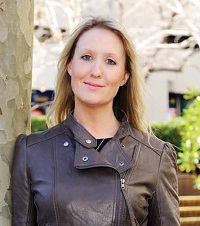 Tabitha Bright survived divorce, death in the family, single parenthood and near bankruptcy to exit life’s rat race unscathed. She now lives a dream:
Tabitha Bright survived divorce, death in the family, single parenthood and near bankruptcy to exit life’s rat race unscathed. She now lives a dream: “My partner Vin and I were in a graphic design business and we were very much caught in the rat race,” Tabitha says. “The only way we could make money was with our time. If we didn’t work, we didn’t make money and that was that. The business required us
“My partner Vin and I were in a graphic design business and we were very much caught in the rat race,” Tabitha says. “The only way we could make money was with our time. If we didn’t work, we didn’t make money and that was that. The business required us“If you’d told me when I was a teenager growing up in New Zealand that I’d build a large property portfolio, that I’d reach a point where I wouldn’t have to work, I wouldn’t have believed it,” she says.
Tabitha admits that she was a troubled soul in her teens. By the time she reached her sixteenth birthday she had already been kicked out of school, labelled as a negative influence on other students. Not knowing what to do with herself, she decided to study graphic design, but was thrown out of the study program once more.
It was round about this time that Tabitha first came into contact with Positive Real Estate, initially as a client.
Using strategies she learned through the group, she initially acquired eight properties in eight months and put in place the building blocks for her multimillion dollar property portfolio.
She tried almost everything. From positive cash flow properties, discount deals and no-money down deals to strata subdividing blocks of units, she was able to build up their asset base very quickly.
“I had learnt some very effective strategies that I applied in the market and, to start with, I bought those eight properties, making my money when I purchased and forcing further value through renovation and strata titling. The result was that I got Vin to quit work and sell the business and he and I took a well-earned break.”
Past retirement
When the novelty of exiting the workforce wore off, Tabitha looked for new opportunities and a fresh challenge and soon joined Positive Real Estate to teach what she had been taught and use her own experiences to help others.

